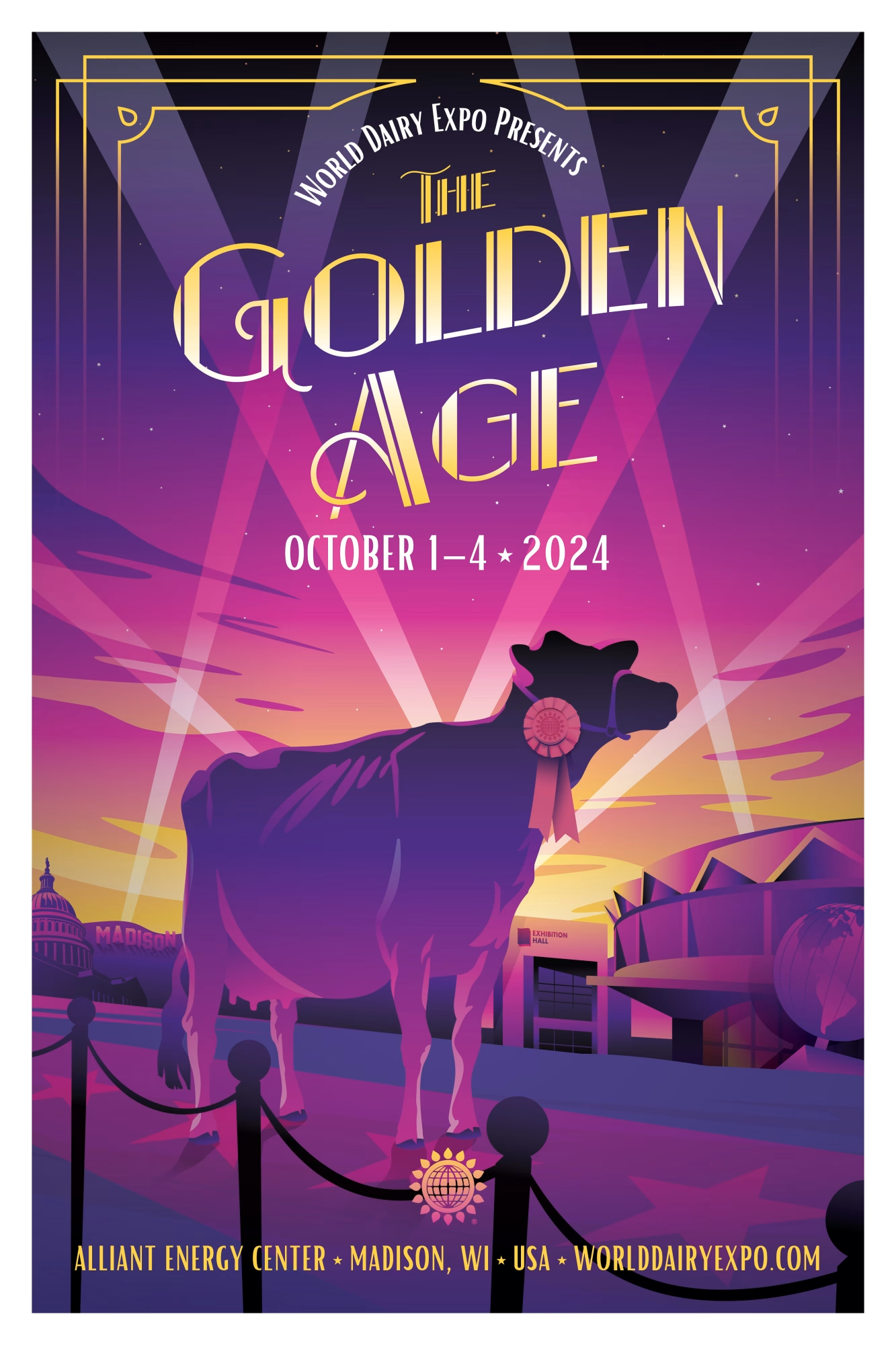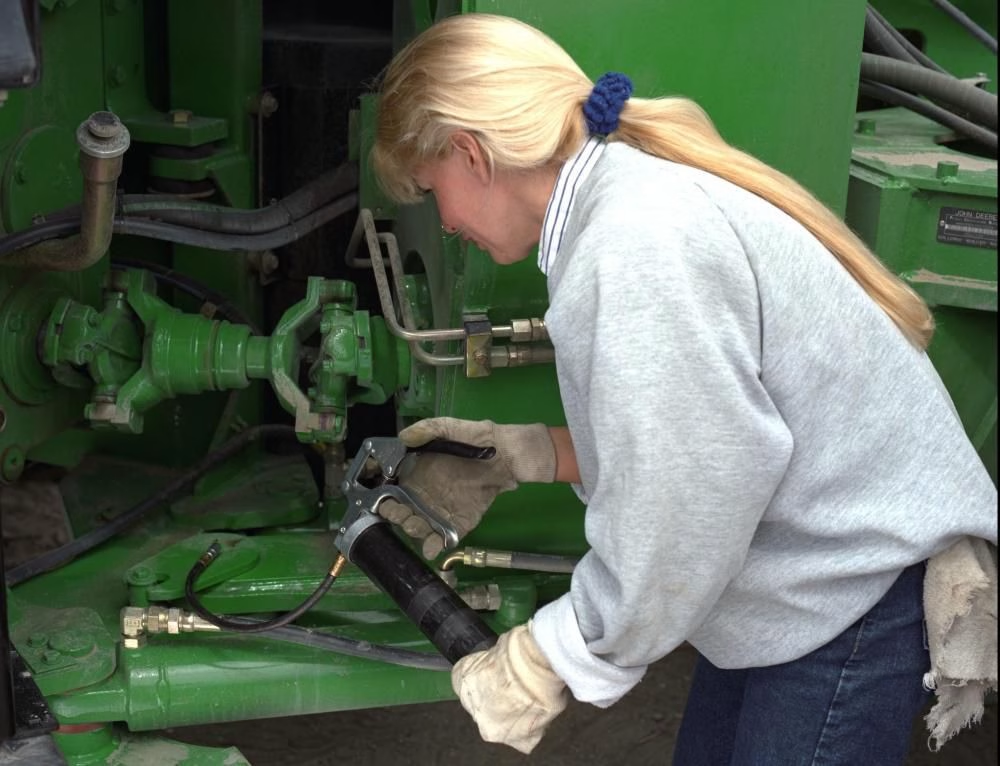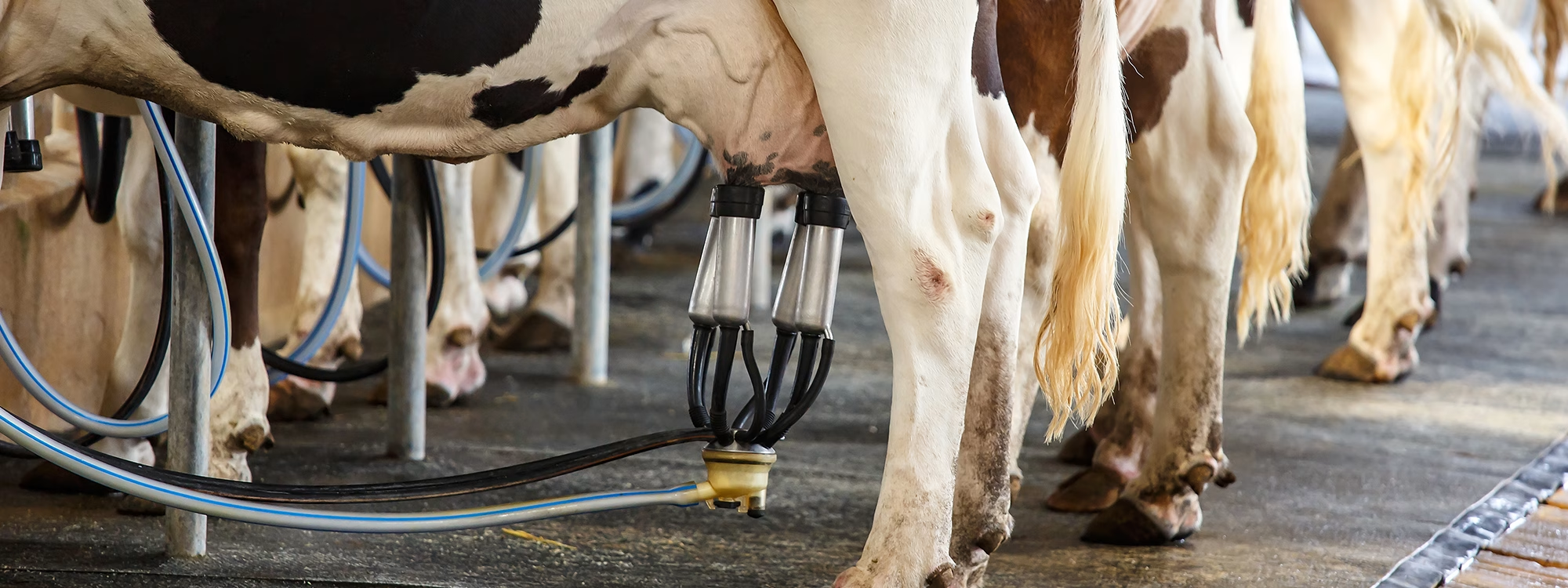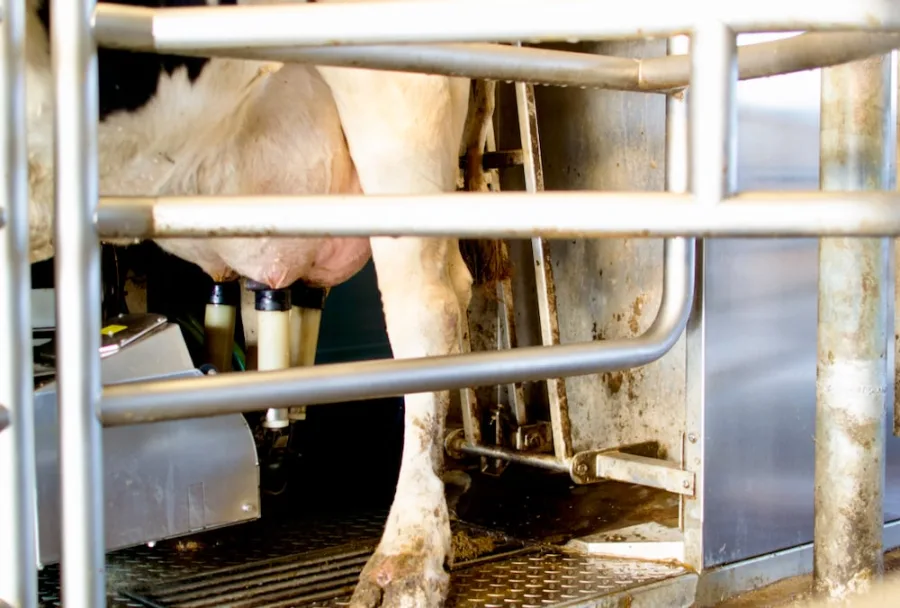Explore the future of dairying at the World Dairy Expo 2024! Check out innovations, meet experts, and celebrate excellence. Ready to join the Golden Age?
Summary: World Dairy Expo 2024, set from October 1-4, showcases the Golden Age of dairying, drawing parallels with Hollywood’s technological advancements in film. This year features over 600 companies presenting the newest innovations in genetics, feed, calf care, etc. Attendees can expect interactive sessions, expert advice, and networking with global producers from 100 countries. Key awards will honor industry contributors, while the cattle show will highlight some of the greatest dairy cattle in the world. The 40th anniversary of the World Forage Analysis Superbowl promises top-notch forage samples and seminars. New highlights include an upgraded Supreme Junior Champion Ceremony and a subscription-based ExpoTV for remote viewing.
- World Dairy Expo 2024 celebrates the Golden Age of dairy, focusing on technological advancements.
- Over 600 companies will showcase innovations in dairy management, including genetics, feed, and calf care.
- Attendees can participate in interactive sessions, gain expert insights, and network with producers from 100 countries.
- Awards will honor significant contributors to the dairy industry, including International Person of the Year and Dairy Producer of the Year.
- The cattle show will feature top breeds, with nearly 2,600 animals competing for the Supreme Champion title.
- The World Forage Analysis Superbowl celebrates its 40th anniversary with high-quality forage samples and educational seminars.
- New features include an upgraded Supreme Junior Champion Ceremony and a subscription-based ExpoTV for remote viewers.

The World Dairy Expo, a remarkable event that heralds the Golden Age of dairying, is an unparalleled learning opportunity! This year’s Expo, scheduled from October 1-4, 2024, will feature approximately 600 companies showcasing cutting-edge milking equipment and sophisticated genetic research. It’s a one-of-a-kind chance to learn from worldwide dairy finance, regulatory, and sustainability specialists. The Expo will also showcase must-see trends, major recognition prizes, fascinating cattle displays, and instructive seminars like the World Forage Analysis Superbowl. Stay tuned; you’re in for a unique and enriching learning experience!
Have you ever heard of the Golden Age of Hollywood?
Imagine a transformation in the dairy industry, akin to the Golden Age of Hollywood, when movies began talking and exploding into bright colors, changing how tales were delivered on screen. This year’s World Dairy Expo has a concept similar to that but for the dairy business. They’re calling it “The Golden Age of Dairying,” an idea that’s more than just a name; it’s a call to action, a motivation for dairy farming’s future. This event is not just about showcasing innovations; it’s about inspiring the next generation of dairy farmers. You do not want to miss it.
This gorgeous motif is made possible by modern technologies. Advanced technology is transforming dairy production, much as sound and technicolor altered the silver screen. Ever wonder how the most recent advances in genetics, manure management, and calf care are changing the industry? That is precisely what the Expo is about this year.
Think about it for a second. During Hollywood’s Golden Age, technological advancements made films more entertaining, gorgeous, and accessible to viewers worldwide. Modern dairy technology improves farm efficiency, productivity, and sustainability. The possibilities seem limitless, ranging from 3D simulation modeling and Bovaer 10, which significantly cuts methane emissions, to remote monitoring of milking parlors.
Ready to Transform Your Dairy Farming World?
Are you enthusiastic about the dairy industry’s innovative trends? This year’s World Dairy Expo will bring together over 600 enterprises to display cutting-edge advances. Consider the possibilities of the latest in genetics, manure management, feed and forage, calf care, milking equipment, housing, and cow comfort. Consider how these advancements may improve your daily operations, making them more efficient and successful. It’s a promising look into the future of dairy farming and a unique chance to network with other dairy farmers and professionals worldwide.
It’s about having the latest technology and learning how to manage your dairy cows to increase overall farm output effectively. Innovative data collecting and usage techniques and technologies will be prominently shown, delivering essential insights that will assist you in making better choices.
Consider this: more inventive farming with data at your fingertips, allowing you to optimize your herd’s health and productivity. These technologies are intended to drive your farm into the future, keeping it competitive and sustainable in an ever-changing sector. Take advantage of this unique chance to learn, develop, and network with other dairy farmers and professionals worldwide. By attending, you can gain practical insights and strategies to increase your farm’s output and efficiency.
World Dairy Expo Spotlights
Recognition awards play a pivotal role in the World Dairy Expo, embodying the event’s celebration of excellence and innovation within the dairy industry. These awards aren’t just about trophies and titles; they spotlight individuals and teams whose relentless dedication and groundbreaking work push the boundaries of dairy farming.
For 2024, the honorees include:
- International Person of the Year: Paul Larmer, former CEO of Semex, Ontario, Canada
- Industry Persons of the Year: Jim Barmore, Marty Faldet, and King Hickman, founders of GPS Dairy Consulting of Minnesota, USA
- Dairy Producers of the Year: Mike, Ed, Barb, Sandy Larson, and Jim Trustem of Larson Acres, from Wisconsin, USA
The honor will be placed on Wednesday evening, October 2, during the distinguished honor Banquet in The Tanbark at the Expo. It is a ticketed event, so get your tickets at www.worlddairyexpo.com by September 20, 2024.
Step into the Ultimate Dairy Showdown: Where Excellence Meets Passion
Imagine strolling into a world where North America’s best dairy cattle battle for the coveted Supreme Champion title. The excitement is apparent as over 2,600 animals march before the judges, representing the world’s best from seven distinct breeds. With over 1,800 exhibitors from 36 U.S. states and five Canadian provinces, you can sense each participant’s prestige and dedication to the event.
This is more than simply a competition; it displays dairy farming expertise. The barns are bustling with activity and provide a unique setting to meet breeders, see the lovely animals, and acquire vital insights. And suppose you want to invest in champion bloodlines. In that case, there are plenty of options here—both via private sales and the four breed sales conducted throughout the week.
Celebrating 40 Years of Forage Excellence: The World Forage Analysis Superbowl
This year marks the 40th anniversary of the World Forage Analysis Superbowl, which has focused on increasing dairy forage quality for four decades. With eight distinct categories, the event encourages forage producers to present their best forages. Over 300 submissions are examined annually, and entrants compete for over $26,000 in awards.
Winning samples will be displayed in the Trade Center during the exhibition, and farmers will be honored at the Brevant Seeds Forage Superbowl Luncheon on October 2. This event is more than simply a competition; it is about developing the whole field of dairy foraging.
In addition to the Super Bowl, renowned forage research specialists will provide cutting-edge knowledge at entertaining lectures from October 2 to 4. These seminars provide a wealth of information, owing to the participation of industry experts such as Dairyland Laboratories, Hay & Forage Grower, the U.S. Dairy Forage Research Center, the University of Wisconsin, and the World Dairy Expo. Attendees may expect to hear about the most recent advances in forage management from some of the industry’s sharpest minds.
Exciting New Features and Changes Await!
This year’s World Dairy Expo will introduce exciting new features and adjustments you will take advantage of. One of the attractions is the updated Supreme Junior Champion Ceremony. Imagine the greatest heifers strutting their thing under the limelight in a high-energy event on Thursday, October 3, immediately after the International Holstein Heifer Show. It promises to be a memorable event!
But that is not all. Can’t get to Madison? Not a problem! ExpoTV is getting interactive. For the first time, ExpoTV subscribers may watch live coverage of the Expo from the comfort of their own homes. It’s not enough to merely observe; you must also participate in the activity, even from a distance. This interactive feature lets you engage with the event in real time, making it a truly immersive experience.
The Bottom Line
The World Dairy Expo 2024 promises to be a must-see event for anybody in the dairy sector. Everyone may find something to enjoy, from cutting-edge technology and innovative trends to industry leader awards and breathtaking livestock exhibitions. This Expo has everything, from learning about the newest research to networking with specialists worldwide. The blend of in-person and virtual encounters allows you to engage no matter where you are. So, why not mark your calendars and join the Golden Age of dairying?
For the most up-to-date information and to plan your visit, check out the official website at www.worlddairyexpo.com. Get ready to experience the future of dairy farming!
















